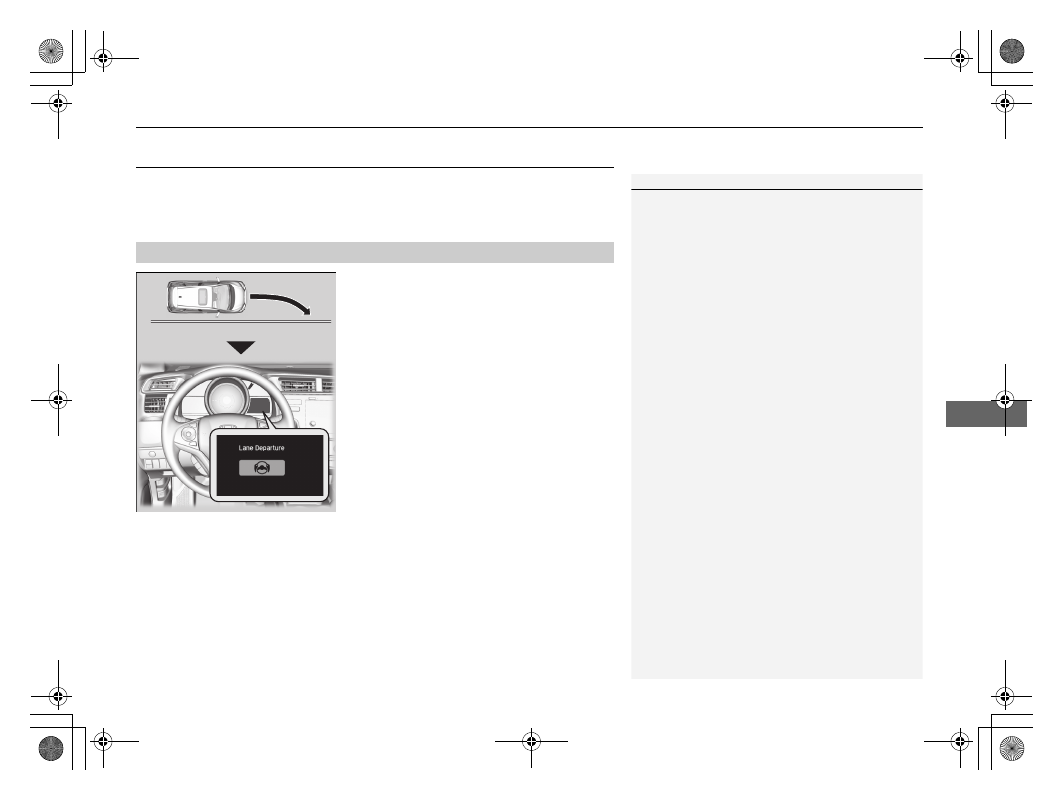Honda Fit (2019 year). Instruction - part 29

447
uu
When Driving
u
Road Departure Mitigation (RDM) System
*
Continued
Driving
Road Departure Mitigation (RDM) System
*
Alerts and helps to assist you when the system determines a possibility of your
vehicle unintentionally crossing over detected lane markings and/or leaving the
roadway altogether.
The front camera behind the rearview mirror
monitors left and right lane markings (in white
or yellow). If your vehicle is getting too close
to detected lane markings without a turn
signal activated, the system, in addition to a
visual alert, applies steering torque and alerts
you with rapid vibrations on the steering
wheel, to help you remain within the detected
lane.
As a visual alert, the Lane Departure
message appears on the multi-information
display.
■
How the System Works
1
Road Departure Mitigation (RDM) System
Important Safety Reminder
Like all assistance systems, the RDM system has
limitations.
Over-reliance on the RDM system may result in a
collision. It is always your responsibility to keep the
vehicle within your driving lane.
The RDM system only alerts you when lane drift is
detected without a turn signal in use. The RDM
system may not detect all lane markings or lane or
roadway departures; accuracy will vary based on
weather, speed and lane marker condition. It is
always your responsibility to safely operate the
vehicle and avoid collisions.
You can read about handling information for the
camera equipped with this system.
P. 431
The RDM system may not work properly or may work
improperly under the certain conditions:
2 RDM Conditions and Limitations P. 450
There are times when you may not notice RDM
functions due to your operation of the vehicle, or
road surface conditions.
* Not available on all models